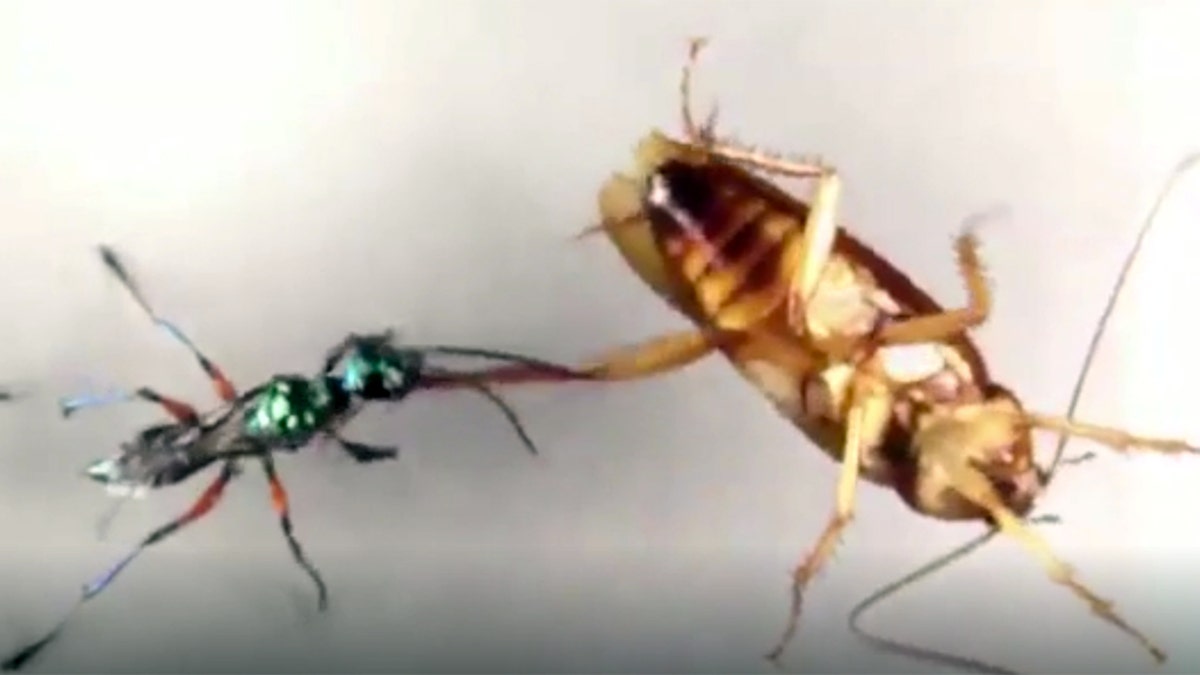
Vanderbilt University professor Ken Catania studied how American cockroaches can successfully fight off emerald jewel wasps. (Vanderbilt University)
A researcher at Vanderbilt University may have found out how American cockroaches can avoid their own “zombie apocalypse.”
Ken Catania, a biologist and professor at the school, videotaped interactions between the roaches and their predators — emerald jewel wasps — and studied their interactions.
“It’s kind of a famous interaction in biology circles and beyond,” Catania told Fox News.
An emerald jewel wasp will temporarily paralyze an American cockroach’s front legs and “weave its stinger through the cockroach’s throat into its brain,” essentially “zombifying” it, he explained.
NASA'S PLANET-HUNTING TELESCOPE RUNS OUT OF FUEL
“When the venom takes effect, the cockroach becomes passive and can be led by its antenna into a hole, where the wasp deposits an egg and then seals the exit with debris,” he wrote in a study published online Wednesday in “Brain, Behavior and Evolution.” “The cockroach has the ability to walk, run, or fly if properly stimulated, but it does not try to escape as it is slowly eaten alive by the developing wasp larva.”
Adult American cockroaches, Catania found, were frequently “taken by surprise by the wasp” in matchups. In situations like these, where a cockroach is caught off guard and doesn't have time to defend itself, the survival rate is only about 14 percent.

Ken Catania's study found different survival rates for interactions involving emerald jewel wasps and American cockroaches. (Catania Lab)
Catania's study found different survival rates for interactions involving emerald jewel wasps and American cockroaches. During his research, he discovered the bugs can use certain tactics to avoid a gruesome fate.
When American cockroaches take an en garde position, they can kick at their attackers, he explained. The cockroach “will hit the wasp in the head usually over and over again.”
Catania said he’d heard about cockroaches’ defensive tactics in passing, but they hadn't been studied until now.
“It takes a number of hits to convince the wasp there is an easier cockroach” to target, he said. Roaches, he explained, have back legs with “really intimidating spines,” comparing them to “a spiked club that you use for self-defense.”
COUPLE SPOTS RARE WHITE 'GHOST' MOOSE
Adult American cockroaches that took a “stilt-standing” en garde position survived 63 percent of the time, according to his study. These bugs kicked at the wasps and managed to evade the wasps’ movements.
“People often talk about how important it is to be fast if you’re prey,” Catania said. “Here, two-thousandths of a second makes the difference.”
Catania thinks his findings could be useful for a few different reasons.
“It’s not only fascinating for understanding how the world works and predator-prey interactions” but also could be useful for teaching purposes, he said.




















